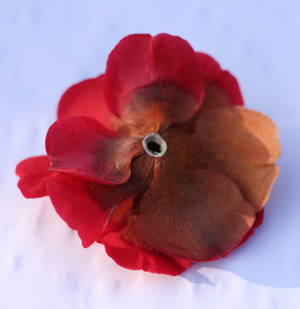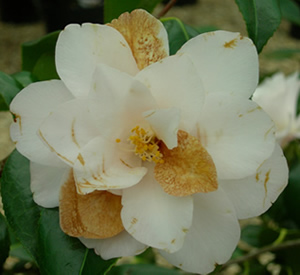| Images of Flower Blight | Camellia Flower Blight |
|


|
Camellia Flower (or Petal) Blight, Ciborinia camelliae, is a fungal disease that causes premature browning of Camellia flowers and which can appear very similar to frost damage. It only affects Camellias, and then only the flowers – no other part of the plant. The disease was first recorded in Japan nearly one hundred years ago and has since spread to New Zealand, the US and much of mainland Europe, and has been present in the UK for more than ten years.
|
|
Infected flowers develop brown spots that quickly spread across the entire petal surfaces, the whole flower eventually becoming brown. A tell-tale sign that this has been caused by Flower Blight is the white ring of fungal threads at the base of the petals. Once the flower has fallen, small, hard dark-coloured structures (sometimes described as being like little raisins) appear at the base of the dead petals and these remain in the soil and leaf litter until the following spring. These sclerotia then germinate and produce small, brown mushroom-like structures (apothecia) that appear above the soil surface and release clouds of fungal spores to infect that seasons flowers and so continue the life-cycle. The disease is favoured by the mild, damp conditions required for the fungal spores to infect the petals.
|
|
Unfortunately there is currently no chemical treatment available for Camellia Flower Blight, and once established in an area it is virtually impossible to eradicate. However, as the disease is not present in the plant itself, only in the infected flowers, it is possible to mitigate against its effects through good hygiene. All fallen flowers should be removed from around the base of the plant as soon as possible and disposed of (never composted) to reduce the level of disease in subsequent years.
Any flowers which show the signs of blight should be removed and disposed of immediately.
In autumn, disturb the soil underneath the plant to destroy any sclerocia which could re-infect the following Spring
|
|